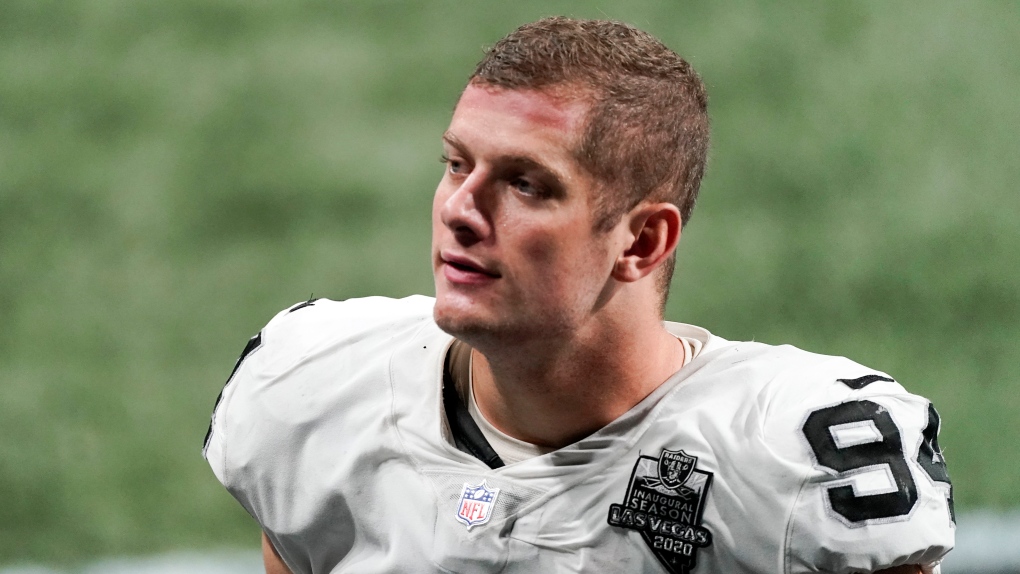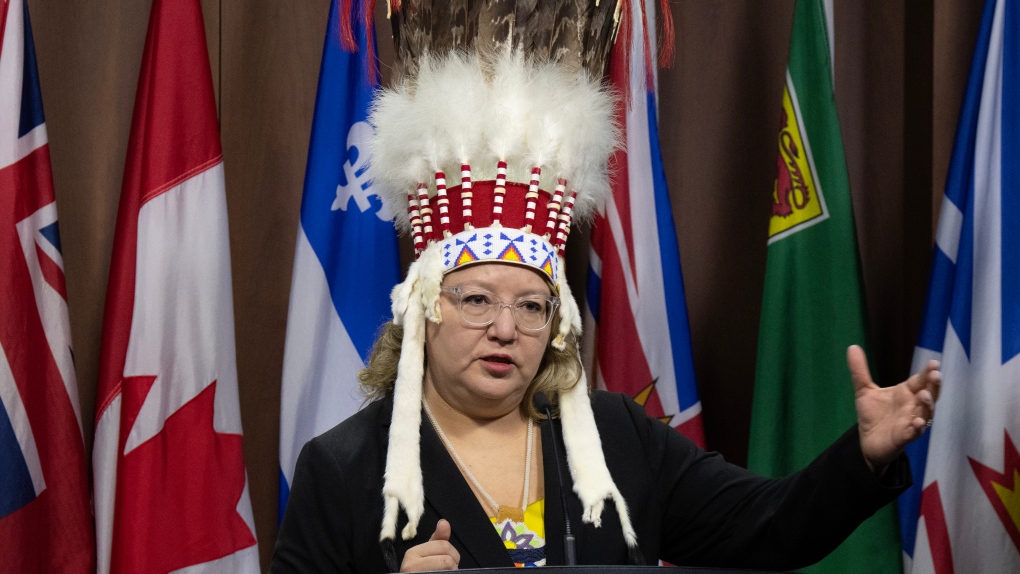Hello, Earthlings! This is our weekly newsletter on all things environmental, where we highlight trends and solutions that are moving us to a more sustainable world. (Sign up here to get it in your inbox every Thursday.)
This week:
- How Indigenous pipeline resistance keeps emissions in the ground
- Online shopping: convenient … and a contributor to climate change
- When it comes to bird feeders, there’s a pecking order
How Indigenous pipeline resistance keeps emissions in the ground

Since the latest RCMP raid on Wet’suwet’en land defenders and their allies in northern B.C., questions have been swirling about legal rights, excessive police force and the timing of the first round of arrests, which occurred right after B.C. declared a state of emergency for flooding and landslides in southern parts of the province.
But there’s another question surfacing from the longstanding Wet’suwet’en conflict with Coastal GasLink as well as broader Indigeous opposition to pipelines across North America: What impact are these actions having on the climate?
According to a new report by the Indigenous Environmental Network, Indigenous resistance to oil and gas projects in North America over the past decade has saved nearly 1.6 billion tonnes of annual greenhouse gas emissions. That’s about a quarter of what Canada and the U.S. release together each year, the report states, or the amount of pollution from roughly 345 million cars.
“The most direct way for us to avoid further climate chaos is to keep fossil fuels in the ground,” said Dallas Goldtooth, the Dakota and Diné lead author of the report, who some may know from the TV series Reservation Dogs. “It’s far past time that we recognize that these movements are making a difference.”
The report looked at avoided emissions from fossil fuel projects that have been cancelled, such as the Keystone XL pipeline, along with struggles still underway, like opposition to the 670-kilometre Coastal GasLink pipeline. If completed, it would transport fracked gas from Dawson Creek to a proposed $40-billion liquified natural gas (LNG) processing facility near Kitimat.
The report estimates that direct action by Wet’suwet’en hereditary chiefs and their supporters alone has saved roughly 125 million tonnes of planet-warming greenhouse gases from entering the atmosphere.
Taking this climate benefit into account makes the violent raid of land defenders — including Sleydo’ Molly Wickham, a Gidimt’en clan chief, and Shay Lynn Sampson from the Gitxsan Nation, who were both removed from a cabin at gunpoint — all the more disturbing, Goldtooth said.
“I’m disgusted,” he said. “It’s absurd but not surprising that we are in the year 2021 and Canada is still asserting colonial violence upon Indigenous peoples and then saying it’s doing something good for climate at the same time.”
Gordon Christie, a professor at the University of British Columbia’s Peter A. Allard School of Law, said what’s going on in Wet’suwet’en territory is a clash between legal systems: that of Canada versus the hereditary system of the Wet’suwet’en, which, like nearly all First Nations in B.C., never surrendered their territory or signed a treaty.
“It’s their territory and their law, so it should really trump Canadian law in that context,” said Christie, who specializes in Crown-Indigenous relations.
This idea was acknowledged in the 1997 Supreme Court ruling in Delgamuukw v. British Columbia, which suggests that the Wet’suwet’en hereditary chiefs have authority, or title, over the traditional territory. Band council chiefs — many of whom have signed on to support the Coastal GasLink pipeline — only have jurisdiction over reserves.
But the Supreme Court stopped short of establishing where exactly the Wet’suwet’en hereditary chiefs have title, opting to send that question to a future trial. The UN Declaration on the Rights of Indigenous Peoples (UNDRIP) offers guidance for conflicts like this, but both B.C. and Canada have said they plan to embrace UNDRIP for future decision-making and not apply it to existing projects.
This leaves people like Freda Huson, Chief Howihkat of the Unist’ot’en House Group, no choice but to resist. Huson was arrested in early 2020 alongside two other Wet’suwet’en matriarchs, which sparked solidarity protests across Canada that shut down railways and ports.
Huson was recently named a winner of the international Right Livelihood Award “for her fearless dedication to reclaiming her people’s culture and defending their land.” She accepted the award on Dec. 1 in Stockholm.
Huson said she hopes the award will help raise awareness about Indigenous peoples around the globe fighting to preserve lands, waters and the climate — and inspire others to join them.
“It’s all of our responsibility to protect future generations … to find alternative energy sources that don’t destroy the land,” Huson said.
Until then, members of Unist’ot’en and neighbouring clans like the Gidimt’en are standing up against the pipeline and delaying emissions in the process.
“I don’t see [the Coastal GasLink] project going,” Huson said, citing public opposition and rising tension about cost overruns. “We know these delay tactics are working.”
— Serena Renner
Reader feedback
As demonstrated by the protests outside the recent COP26 climate summit, there is great concern — particularly among younger people — that political leaders are not doing enough to ensure the world will be livable for future generations.
We want to know: Is climate action becoming a divisive issue in your family? Is there intergenerational tension on the topic? What habits, traditions, beliefs have led to this tension? And, what do you see as a solution?
Old issues of What on Earth? are right here.
There’s also a radio show and podcast! Tensions remain high on Wet’suwet’en territory in B.C. after arrests were made to ensure work could continue on the Coastal GasLink pipeline. This week, What On Earth host Laura Lynch hears what the clash means for the climate and why protest might be a potent way to cut emissions. What On Earth airs Sunday at 12:30 p.m., 1 p.m. in Newfoundland. Subscribe on your favourite podcast app or hear it on demand at CBC Listen.
The Big Picture: Online shopping and the environment
It’s an issue we’ve covered before, but as we are in the midst of a pandemic as well as the holiday season, the environmental aspect of online shopping has renewed currency. Many commentators have pointed out that our consumer culture has had negative consequences on the planet, but there are unique aspects to point-and-click purchasing.
There’s the excess packaging, for one. Then there’s the speed with which packages arrive: In an effort to accommodate same-day and next-day delivery, courier companies are often sending out half-empty trucks or resorting more frequently to air travel. Plus, as a result of free returns and the tendency of many clothes shoppers to order multiple sizes in order to find the right fit, there are many more packages in circulation, all of which increases the carbon footprint.
There’s “a bit of a race to the bottom where a number of different online retailers are kind of competing to get goods to consumers as fast as possible,” Maddy Ewing, senior analyst on transportation and urban solutions at the Pembina Institute, told CBC Radio’s Cross Country Checkup. “While that’s great for a consumer, it means that they’re … not necessarily engaging in best practices with their operations.” Experts say ordering more items at once, rather than in dribs and drabs, or buying locally and in person would help reduce the climate cost.

Hot and bothered: Provocative ideas from around the web
When it comes to bird feeders, there’s a pecking order

As birds flock to feeders and compete with each other for seeds, a group of ornithologists has discovered that the feathered creatures follow a pecking order.
Citizen bird watchers across Canada and the United States have been diligently reporting their observations to the Cornell Lab of Ornithology’s Project FeederWatch since 1987, describing which species swoop into their backyards and chase one another for a spot on the feeder.
Now, the Cornell ornithologists have computed that data to create a hierarchy and determine which species rule the roost.
“One of the big take-homes was that size really matters,” said ornithologist Emma Greig, leader of Project FeederWatch, in an interview with CBC’s As It Happens.
“The top bird that we were able to see at feeders was surprisingly the wild turkey…. They’re enormous, so of course they’re at the top.”
Turkeys rarely show up at the feeders, but birdwatchers reported those few-and-far-between sightings to Project FeederWatch, so the large birds made it to the top of the list.
Most often, the next big birds at the feeders are American crows. After them come grackles, blackbirds, blue jays and even some woodpeckers.
“I think that a lot of folks would say, ‘Oh, well of course [woodpeckers] are [high up] because you see them bossing around other birds all the time,'” Greig said. “It’s kind of nice how the data really match up with … our intuition about these hierarchies.”
Woodpeckers are one of the smaller birds that are more aggressive than expected for their body size, the ornithologist said. But there are other small and feisty birds, like chickadees, that rank low on the pecking order.
“They just aren’t big on the fights,” Greig said. “They get out of the way when someone comes along.”
While the birds may look like they’re fighting, Greig said the motivation behind each species making a dash for sustenance is based on its unique displacement behaviours.
That means when one bird makes its way to the feeder, and another bird moves out of the way, they’re not brawling, but rather showing who has more power.
“That’s a real important piece of it. Nobody wants to get hurt,” Greig said.
Instead, there are predictable relationships between the different species that help them decide how to interact.
“Even though it sounds aggressive, they’re actually ways that the birds coexist with each other, kind of peacefully.”
At the same time, it can get dangerous when big flocks of birds bustle to the seed feeders. Greig said goldfinches, for example, vie for the spotlight and do, indeed, end up fighting with each other.
“Sometimes the birds that you’re going to be fighting with the most are your closest relatives, which maybe won’t come as a huge surprise to us,” she said.
Outside of the birds and their newly discovered pecking order, the data told ornithologists of another animal — a predator — that can show up at feeders and send all the birds flying away.
“The squirrels,” Greig said. “They’re just a different beast. They’re enormous. They have teeth…. They’re even predators of young birds, so the birds [have] got to get out of the way when squirrels show up.”
— Mehek Mazhar
Stay in touch!
Are there issues you’d like us to cover? Questions you want answered? Do you just want to share a kind word? We’d love to hear from you. Email us at [email protected].
Sign up here to get What on Earth? in your inbox every Thursday.
Editor: Andre Mayer | Logo design: Sködt McNalty







More Stories
These are the countries where TikTok is already banned
Hubble Space Telescope marks 34 years with new portrait of a ‘cosmic dumbbell’
Prehistoric giant ‘sabre-toothed salmon’ renamed after new discovery | CBC News